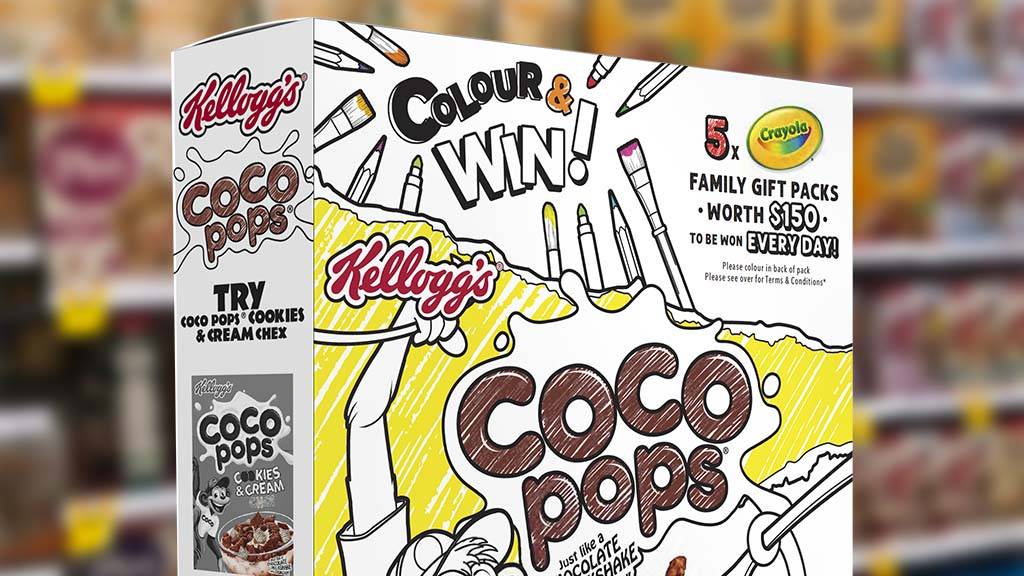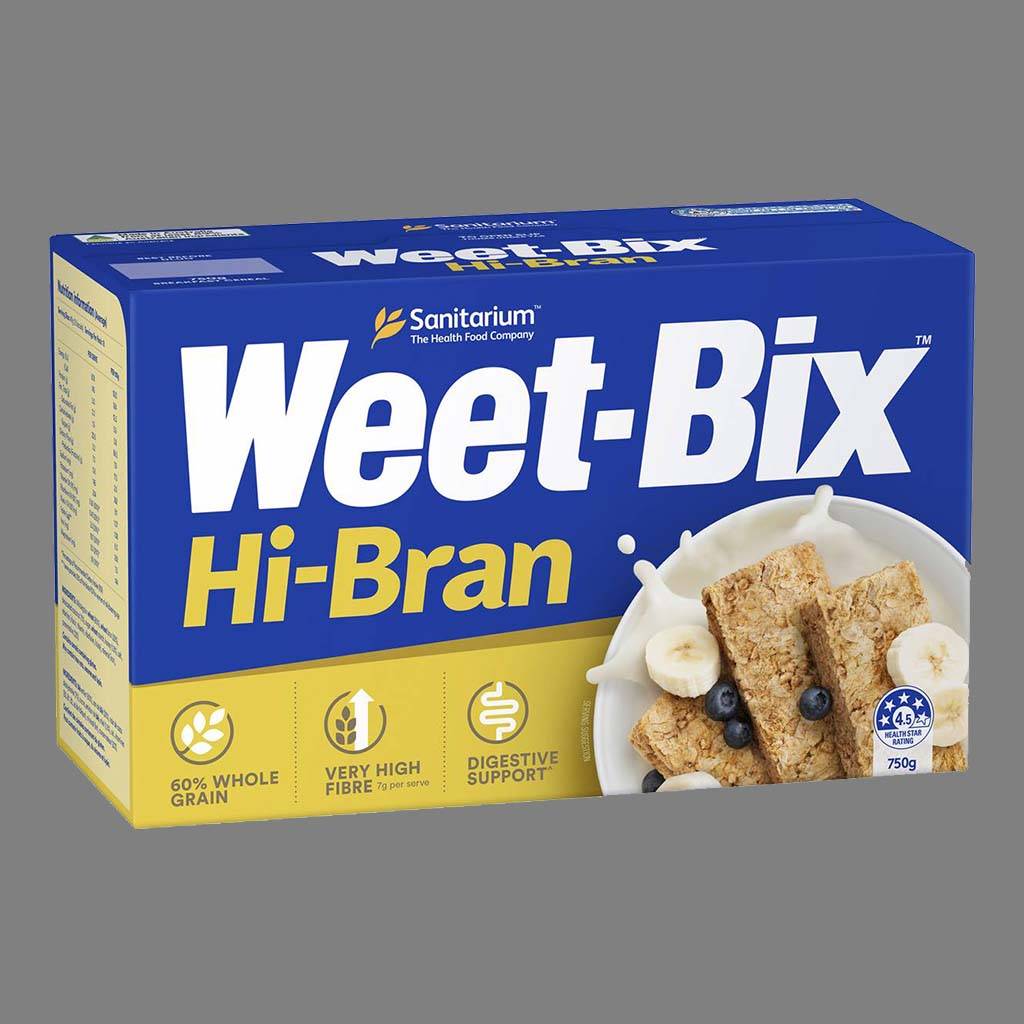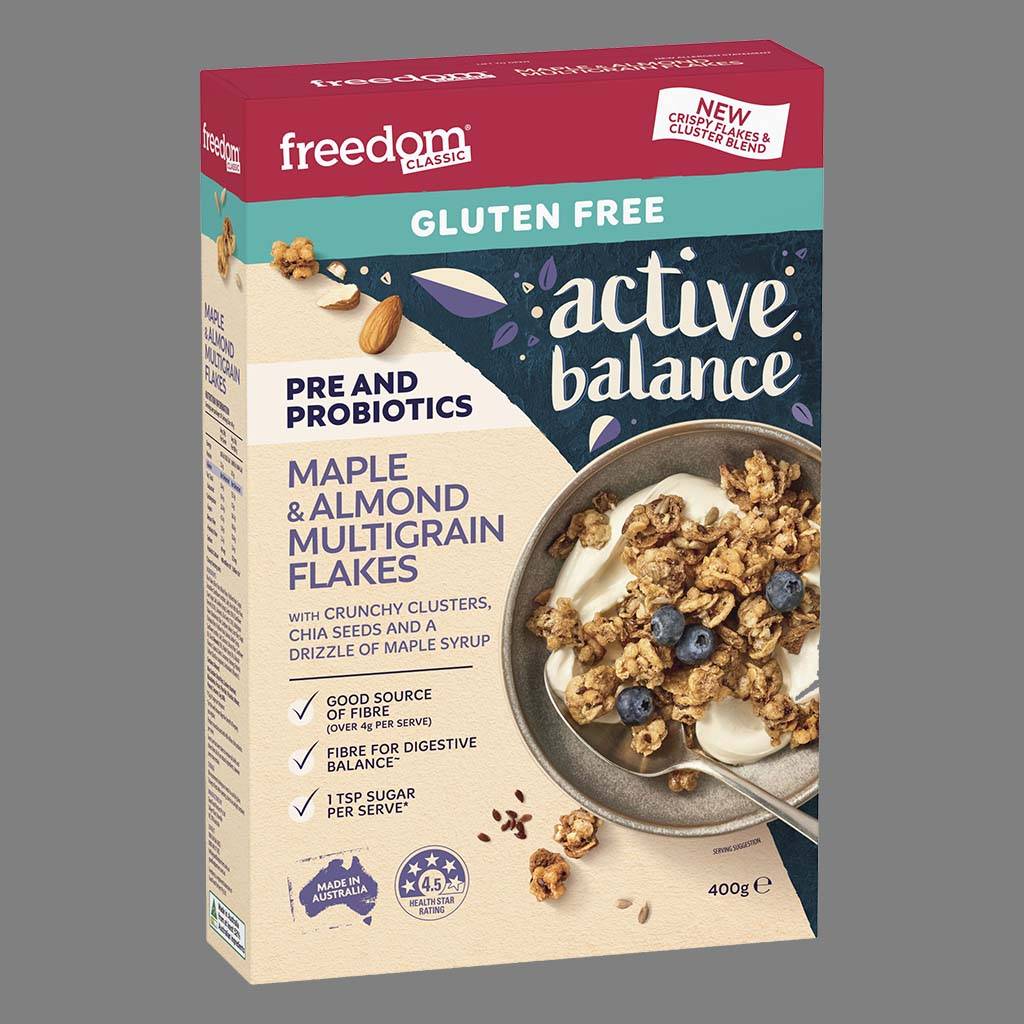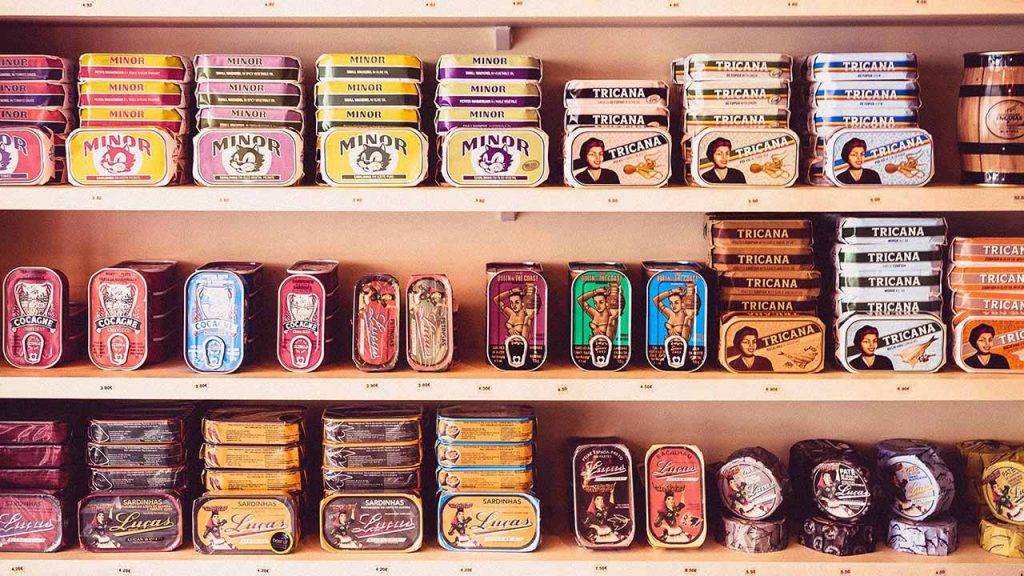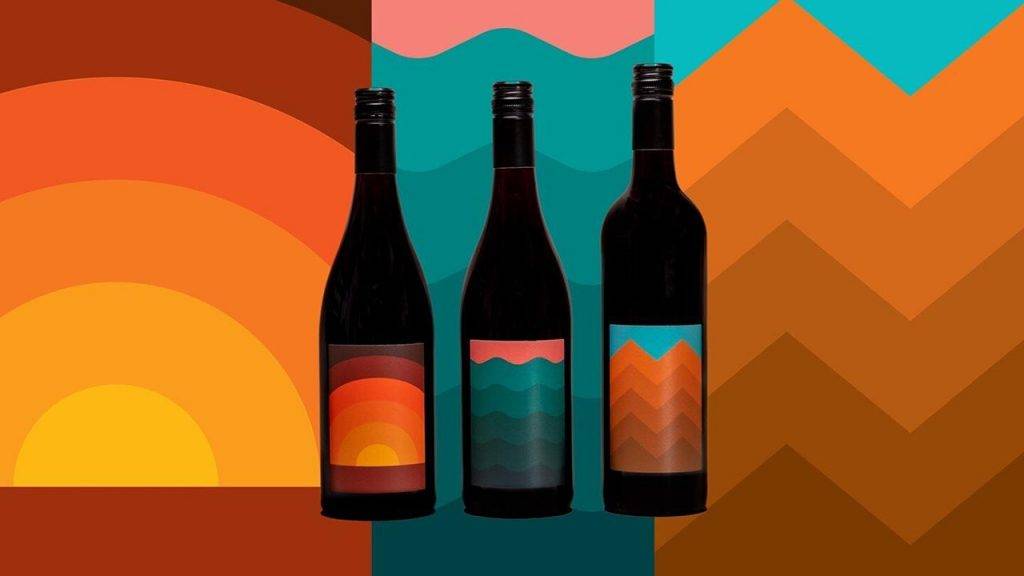Featured image source: Mumbrella
D
espite news.com.au calling millennials the “cereal killers” (1) because they favour their avocado toasts, brunch and on-the-go breakfast, the sector of breakfast cereal is still growing! Just at a slower rate than before.
Cereals are a $1.2 billion industry in Australia (2), making us the fifth biggest consumer behind the US, UK, Mexico and Canada.
In this article, we are looking at the Australian breakfast cereal sector trends to find key takeaways to design packaging in a highly competitive market.
Most popular cereal brands in Australia
- Weet-Bix from Sanitarium
- Aldi Goldenvale
- Coco Pops, Special K, Nutrigrain from Kellogg’s
- Uncle Tobys from Nestle
- Carman’s (Australian-made and owned)
- Freedom Foods (The Arnott Group, US)
Trend 1: Marketing to children
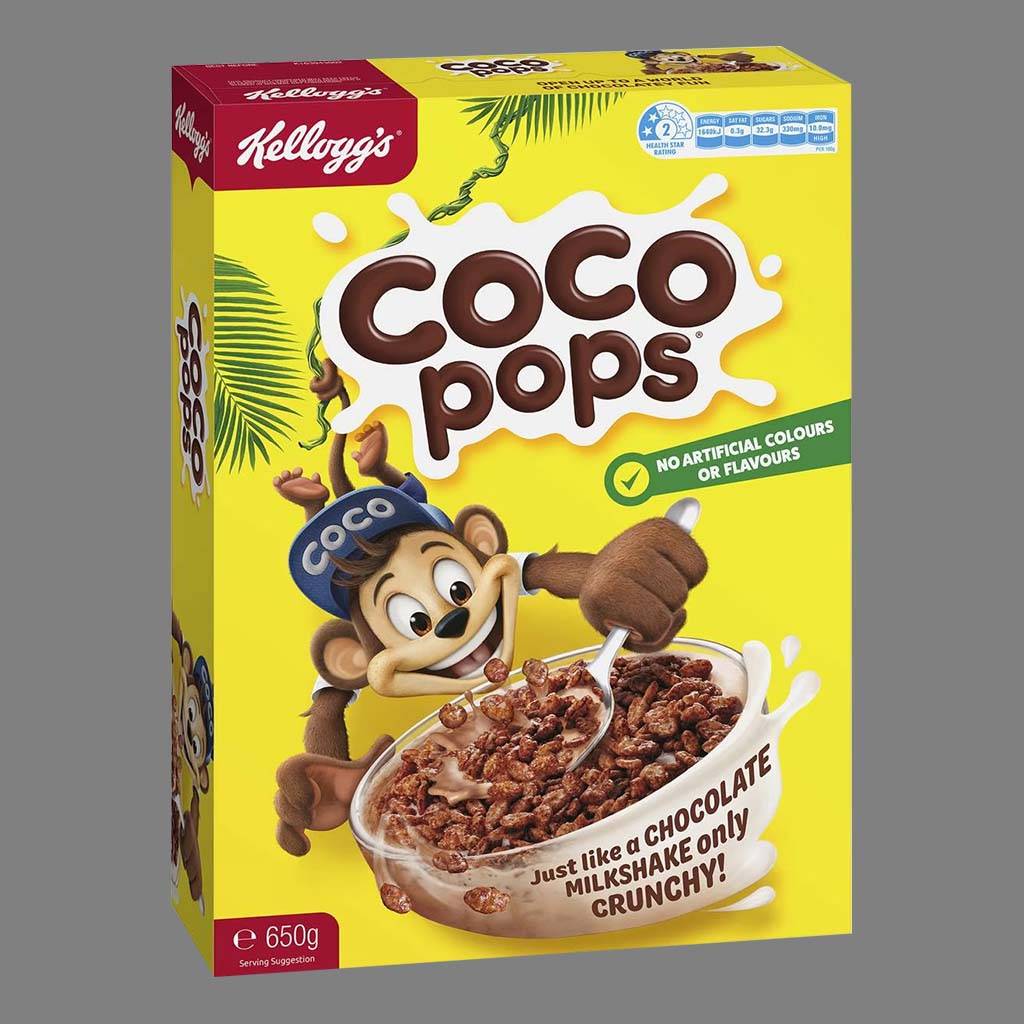
Historically, this always was the go-to strategy to sell kids’ breakfast cereals. The biggest seller still in Australia is Coco Pops by Kellogg’s.
Target market:
- Children
- Parents as the last decision-makers in the buying process
What stands out for the kids:
- The bright primary colours
- The trusty mascot with big eyes and a teddy bear attractivity to it
What stands out for the parents:
- Highlighting the nutritional value for a kid’s growth
- The much-preferred chocolate taste by the kids ensuring a smooth breakfast
Warning
Marketing to children is a very hot topic currently. Several significant players (Centre for Health Initiatives and the Obesity Evidence Hub) complain about the lack of regulations in Australia, especially when it comes to using ‘manipulative marketing strategies’ to market unhealthy food directly to children.
In 2019, UK shadow Secretary of state for digital, culture, media and sport Tom Watson called for a ban on characters used to advertise sugary food and drink, attributing them to being a factor in child obesity. So, we might wonder how long it will for Australia to catch on and eventually say bye-bye to mascots. If this is your market or your strategy, we advise you to be very transparent with your ingredients and health benefits.
If this is your market or your strategy, we advise you to be very transparent with your ingredients and health benefits.
The trend to keep an eye on: Augmented reality packaging
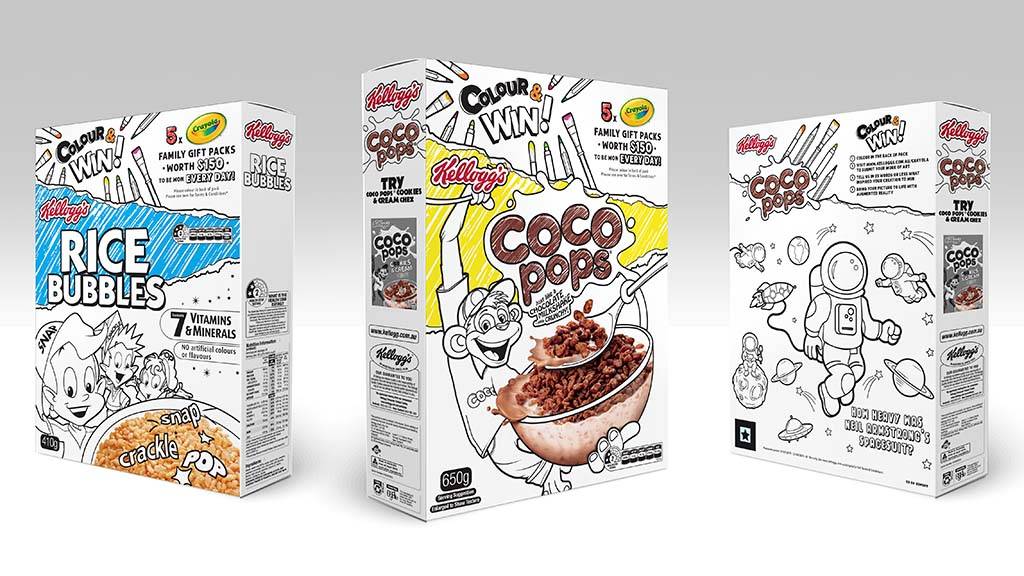
Kellogg’s Australia and US-based art supplies company Crayola partnered to produce black and white cereal boxes that can be coloured in using a browser-based augmented reality tool.
A very cool feature that is bound to attract the kids and transition into a possible time without their famous mascot.
Trend 2: Going healthy
The health-conscious customer is looking for lower levels of sugar, higher fibre content and gluten-free status.
And with more people opting for plant-based diets comes an increase in plant-based cereal options.
Target Market:
- Health-conscious customer
- Higher percentage of women between 24-45yo
What stands out on the shelf:
- List of health variants offered: lower levels of sugar and fibre content and gluten-free status
- Icons and imagery relating to plants
- Imagery of the tasty cereal inside and the different flavour
Health and wellness continue to drive the breakfast cereal market.
The trend to keep an eye on – Sustainable packaging
Cereal boxes are one of the most straightforward packaging options. And sustainability and eco-friendly packaging are now key components of brand image. That is why sustainable packaging initiatives have taken off, with brands taking steps towards reducing plastic waste in cereal packaging.
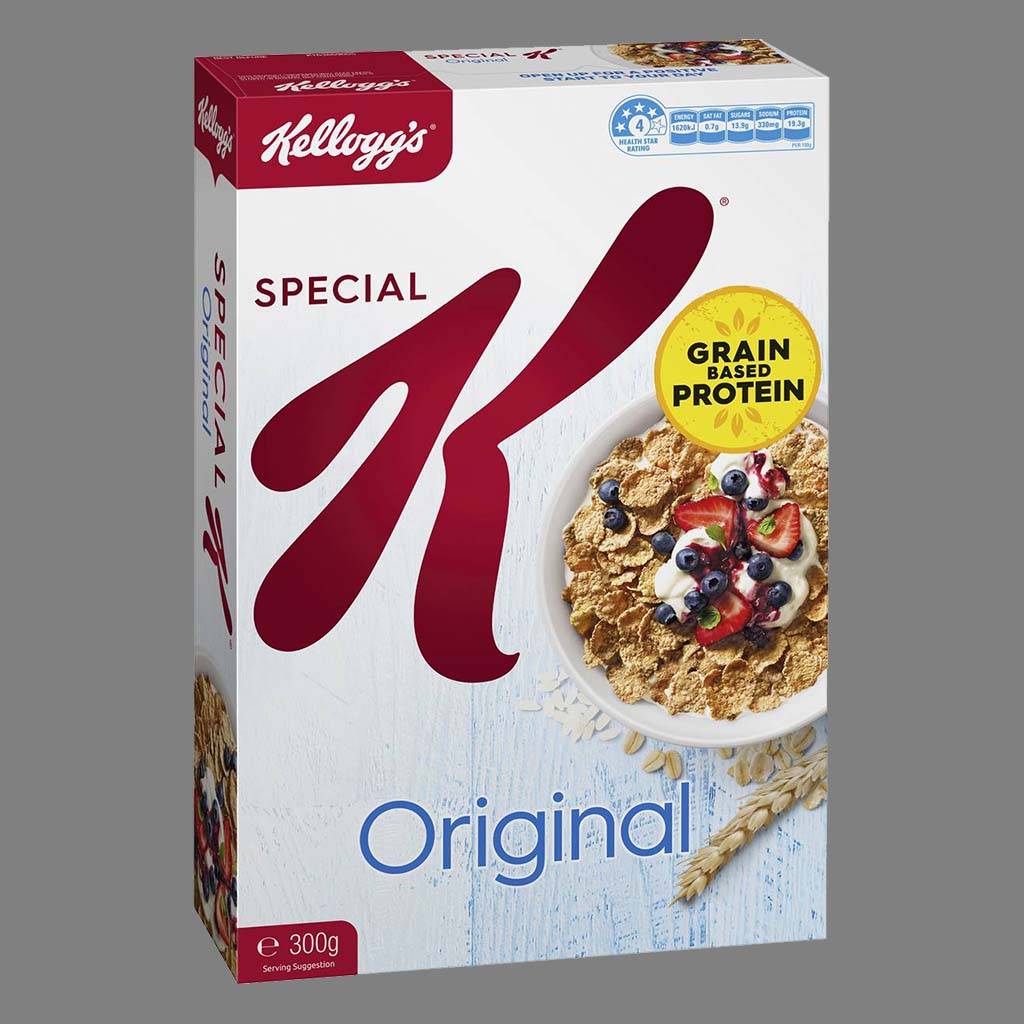
A note on Special K
It was probably the first cereal offer that answered the health-conscious demand as early as 1955, heavily targeting women wanting to keep in shape.
Their giant (and top-of-mind) status explains the simplistic look that hasn’t changed much since its creation.
Trend 3: Take it on the go and nutritious
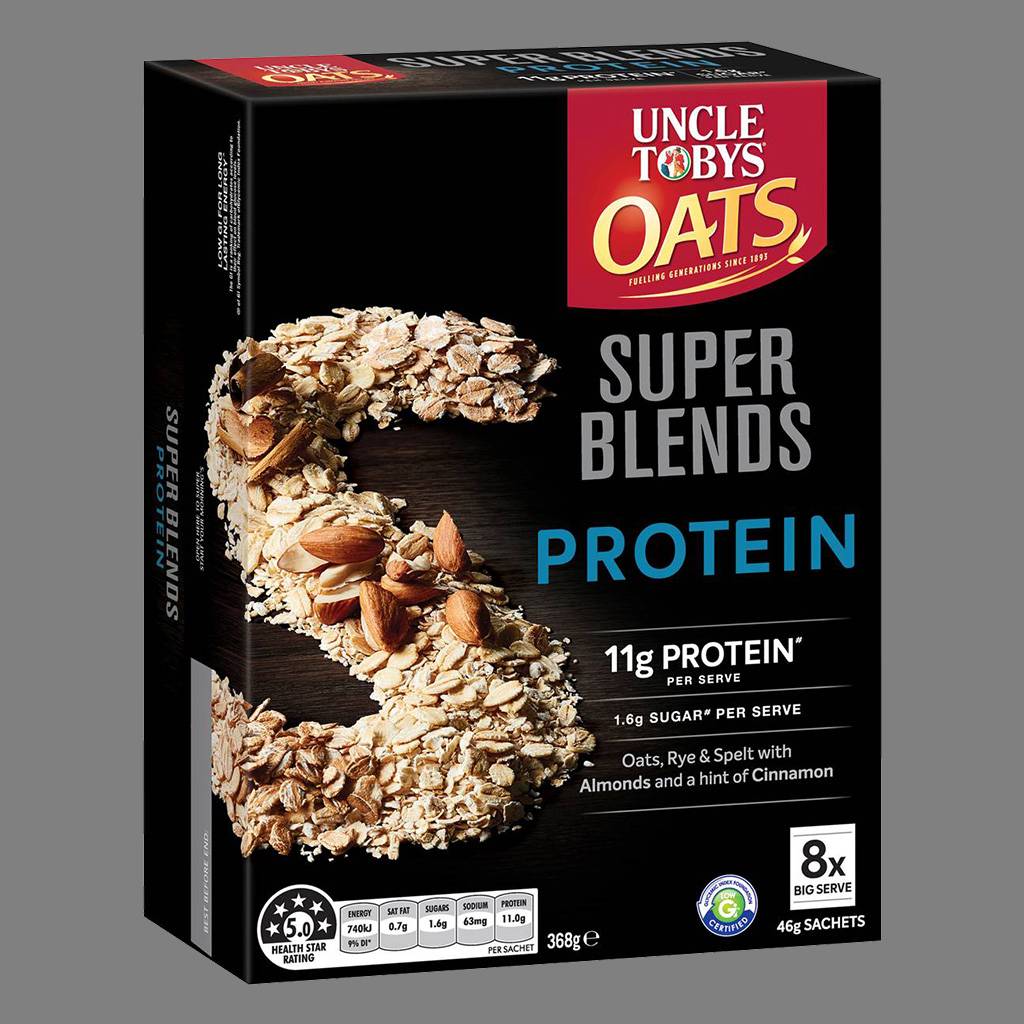
Companies increasingly introduce cereal products containing new ingredients – superfoods and adaptogens –to cater to the wellness trend. This trend goes further than just providing health benefits. They usually heavily insist on the superfoods and higher protein that gym customers like.
Target market:
- Health-conscious customer
- Athlete trying to get lots of protein
- Higher percentage of men between 24-45yo
Also see Sports Supplement Packaging: Styles, Trends & Audience
What stands out on the shelf:
- Colour black that can be associated with power
- Use of copy that target customer sees on gym powders – ‘super’, ‘low sugar’ & ‘protein’
- Sachets for easy proportioning, which is another thing this market is comfortable with because they know it from their protein powder intake

A note on Nutri-Grain
Nutri-Grain, long advertised as ‘Iron Man food’, seems to be the most in favour in Australia (3).
Their promotion completely fits in the ‘healthy athlete’ trend, as well as taking advantage of the eating habits of its target audience – usually preferring on-the-go cereal snacks – by offering Nutri-Grain bars. While the front packaging plays on movement with the font and the imagery, the back showcases success stories from inspiring athletes. Here, the catchphrase “one of the biggest comebacks in sport” and the Iron Man series would appeal to the wellness enthusiast.
.
Public awareness about health and nutrition is driving Australians’ consumption choices. Like any other analysis we did in this blog relating to food, we see that showcasing health benefits drives sales. Jumping on this trend probably saved the cereal industry and is a key takeaway for business selling food.
- https://www.news.com.au/finance/business/retail/cereal-could-be-over-with-declining-sales-forcing-companies-to-think-of-new-products/news-story/4480510be4234e6ff19b995ed1fb206f
- Source: Innova Market Sizing, 2021
- Sydney Morning Herald, 2016

Creative genius, talented wordsmith and all-rounder copywriter up for the grabs! If you can’t stand the look of your copy right now, she’ll shape your rambles into the most compelling words.
Marie Rene | LinkedIn

